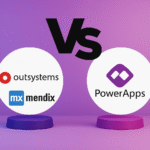Your microservices architecture has spiraled into chaos. You’ve got APIs spread across four different teams. Some are secured, some aren’t. Documentation is nonexistent. Rate limiting is inconsistent. You have no idea which APIs are being used or who’s using them.
- The API Management Market: Why It Exploded
- MuleSoft Anypoint: The Integration Powerhouse
- Apigee: The Analytics and Monetization Specialist
- Kong: The Cloud-Native Speedster
- Head-to-Head Comparison: Where They Actually Differ
- Making The Decision: A Real Framework
- The Cost Reality Check
- Conclusion: Pick Based On Your Actual Problem
You need API management. But when you look at the market, you’re immediately confused. MuleSoft? Apigee? Kong? They all do similar things but in completely different ways. Pick the wrong one and you’re looking at multi-hundred-thousand-dollar commitment with a team stuck on a platform they hate.
Let me cut through the noise. I’ve implemented all three. Here’s what actually matters.
The API Management Market: Why It Exploded
According to NeoAlpha’s 2025 market analysis, the global API management market exploded from $7.6 billion in 2024 to a projected $16.9 billion by 2029—a 17.1% CAGR.
Why? Because companies finally realized that APIs aren’t nice-to-have. They’re fundamental business infrastructure. Every system needs to talk to every other system. Every partner needs access. Every mobile app needs a backend. You need central governance or chaos ensues.
But “API management” means different things to different platforms. MuleSoft emphasizes integration. Apigee emphasizes monetization and analytics. Kong emphasizes performance and microservices. Understanding which is which matters enormously.
MuleSoft Anypoint: The Integration Powerhouse
What it actually is: MuleSoft isn’t really just an API gateway. It’s an integration platform that happens to do excellent API management. The platform connects anything to anything: legacy systems to cloud apps, databases to SaaS, internal systems to partner networks.
Pricing: Custom enterprise licensing. According to multiple sources, MuleSoft is typically the most expensive of the three, with annual costs ranging from $100,000 to $1 million+ depending on organization size.
Real story: I worked with a bank implementing MuleSoft to connect their payment systems, loan origination, and risk management platforms. Without MuleSoft, they would have needed custom integration code for each connection. With MuleSoft, they built reusable integration patterns that now handle billions in daily transactions.
MuleSoft shines when your primary problem is connecting disparate systems. Banks. Insurance companies. Government agencies. These organizations have 50+ legacy systems that need to talk to each other. MuleSoft makes that possible.
Strengths:
- Best-in-class integration capabilities (2000+ pre-built connectors)
- Visual development—non-developers can build complex flows
- Anypoint Exchange lets teams share and reuse integration patterns
- Strong governance for regulated industries
- Salesforce backing means deep CRM/sales cloud integration
- Handles full API lifecycle from design to monetization
Weaknesses:
- Expensive. Seriously expensive.
- Steep learning curve—Anypoint Studio is powerful but not intuitive
- Runtime is heavyweight—requires significant infrastructure
- Slower deployment than cloud-native alternatives
- Overkill for simple API gateway needs
Best for: Large enterprises with complex integration needs. Banks, insurance companies, government, healthcare. Organizations where API management is 10% of the problem—integration is 90%.
Worst for: Startups. Microservices-heavy companies. Fast-moving teams that need simple, lightweight gateway without integration bells and whistles.
Apigee: The Analytics and Monetization Specialist
What it actually is: Apigee (owned by Google) is an API management platform focused on lifecycle management, developer experience, and monetization. If you need to offer APIs to external partners and make money from them, Apigee is built for exactly that.
Pricing: According to API7’s pricing breakdown, Apigee charges:
- $20 per million standard API proxy calls
- $100 per million extensible API calls
- Additional fees for analytics ($20/million calls) and advanced security ($350/million calls)
- Subscription tiers: Standard, Enterprise, Enterprise Plus
In practice, expect $50,000-500,000+ annually depending on traffic volume and features.
Real story: I worked with a telecom company using Apigee to expose network APIs to partners and developers. They monetized API access through subscription tiers. Apigee’s built-in developer portal, API key management, and billing made monetization effortless. They generated millions in additional revenue by charging for API access.
Apigee shines when you need to sell API access or carefully control who accesses what.
Strengths:
- Best-in-class analytics and monitoring
- Built-in developer portal and API marketplace
- API monetization built into platform
- Strong security with threat detection
- Multi-cloud and hybrid deployment options
- Google Cloud integration for those in GCP ecosystem
- Real-time monitoring and insights
Weaknesses:
- Expensive for low-traffic APIs
- Complex pricing makes cost prediction difficult
- Newer version heavily tied to Google Cloud (vendor lock-in)
- Learning curve for policy configuration
- Limited for deep integration work (not its focus)
Best for: Organizations monetizing APIs. Companies with external partners. Organizations needing sophisticated developer portal and analytics. Public API providers.
Worst for: Internal-only APIs. Organizations in AWS/Azure ecosystems (though multi-cloud support exists, GCP is native). Teams needing simple gateway without analytics and monetization overhead.
Kong: The Cloud-Native Speedster
What it actually is: Kong is a lightweight, open-source API gateway built for cloud-native, microservices architectures. It prioritizes performance, scalability, and simplicity.
Pricing: According to APIX-Drive’s comparison:
- Kong Open-source: Free
- Kong Plus (commercial): $500/month starting
- Kong Enterprise: Custom pricing
At enterprise scale, Kong is dramatically cheaper than MuleSoft or Apigee. A 10,000 API deployment on Kong might cost $100,000/year. The same deployment on MuleSoft could cost $2 million+.
Real story: I worked with HSBC modernizing their API infrastructure with Kong. They had thousands of internal APIs running on legacy systems. Kong gave them centralized management, rate limiting, authentication, and analytics without the enterprise pricing of MuleSoft/Apigee. They reduced operational complexity and cut costs by 60%.
Kong shines when you have lots of APIs that need to be managed, but the management is straightforward—not complex integration work.
Strengths:
- Extremely lightweight and performant
- Open-source core with optional commercial support
- Kubernetes-native (runs as sidecar, easily integrated with K8s)
- Extensive plugin ecosystem (40+ pre-built plugins)
- Much cheaper than competitors at scale
- Developer-friendly—DevOps teams love it
- Excellent for microservices architectures
- Low latency, high throughput
Weaknesses:
- Less mature developer portal compared to Apigee
- No built-in API monetization
- Documentation can be confusing for beginners
- Limited analytics out-of-box (need integrations)
- Not ideal for deep integration work (not its focus)
- Open-source version requires more operational overhead
Best for: Microservices architectures. Kubernetes deployments. High-volume, simple APIs. DevOps-first organizations. Cost-conscious enterprises. Companies with internal APIs managing microservices.
Worst for: Organizations needing sophisticated monetization. Companies requiring deep legacy integration. Teams wanting fully managed SaaS experience.
Head-to-Head Comparison: Where They Actually Differ
According to NeoAlpha’s detailed comparison, here’s how they actually stack up:
| Aspect | Kong | Apigee | MuleSoft |
|---|---|---|---|
| Architecture | Cloud-native, microservices-friendly | API proxy-based management layer | Monolithic integration engine |
| Performance | Extremely lightweight, low latency | Built for enterprise scale | Heavy runtime, requires resources |
| Integration | Limited (focus is gateway) | API transformation only | Best-in-class with 2000+ connectors |
| Developer Portal | Basic | Sophisticated, monetization-ready | Basic |
| Cost | Cheapest ($50K-200K/year enterprise) | Mid-range ($100K-500K/year) | Expensive ($200K-2M+/year) |
| Learning Curve | Moderate | Steep | Very steep |
| Ideal For | Microservices, Kubernetes | API monetization, analytics | Complex integration, legacy systems |
Making The Decision: A Real Framework
Here’s how I’d actually decide:
If you’re primarily managing internal microservices: Use Kong. It’s designed exactly for this. Open-source to get started, Kong Plus when you need support. Save enormous money compared to alternatives.
If you’re selling APIs to external partners: Use Apigee. Its developer portal, analytics, and monetization are exactly what you need. The cost is justified by revenue generated from API sales.
If you’re integrating legacy systems with modern apps: Use MuleSoft. Yes, it’s expensive. But the integration connectors save you 10x the cost in development time. For integration problems, MuleSoft is worth it.
If you’re already in a vendor ecosystem: Use what fits your ecosystem. Salesforce customers? MuleSoft (owned by Salesforce). Google Cloud heavy? Apigee. AWS/Kubernetes focused? Kong.
The Cost Reality Check
Let’s get real about what you’ll actually spend:
Small team, 100 APIs, internal use:
- Kong: $5,000-10,000/year (open-source + support)
- Apigee: $50,000-100,000/year (waste for internal-only APIs)
- MuleSoft: $200,000+/year (significant overkill)
Mid-market, 500 APIs, mixed internal/external:
- Kong: $50,000-100,000/year
- Apigee: $100,000-300,000/year
- MuleSoft: $400,000-800,000/year
Enterprise, 5000+ APIs, monetization needed:
- Kong: $200,000-400,000/year
- Apigee: $500,000-1,500,000/year
- MuleSoft: $1,000,000-3,000,000/year
The cost difference is enormous. Don’t overpay for features you don’t need.
Conclusion: Pick Based On Your Actual Problem
All three platforms work. But they solve different problems.
Kong solves the “I have many APIs and need simple, fast management” problem.
Apigee solves the “I’m selling APIs and need analytics, monetization, and sophisticated developer experience” problem.
MuleSoft solves the “I’m integrating legacy systems with modern apps and need hundreds of pre-built connectors” problem.
Pick based on your actual problem, not hype or vendor size. And if you’re uncertain? Start with Kong. It’s cheaper to learn and you can always migrate later if you outgrow it.












